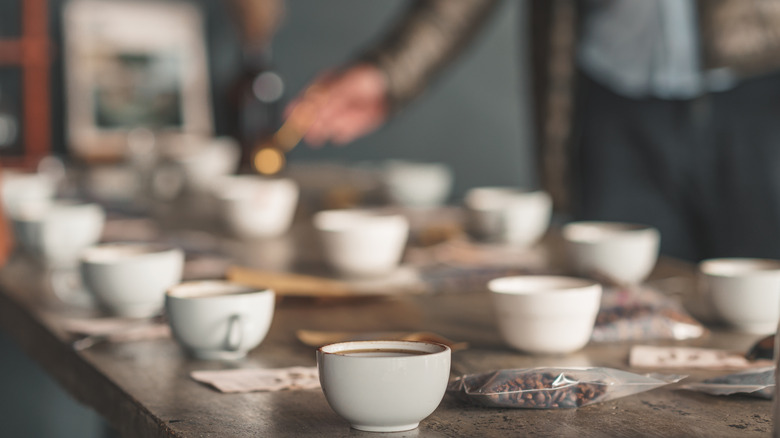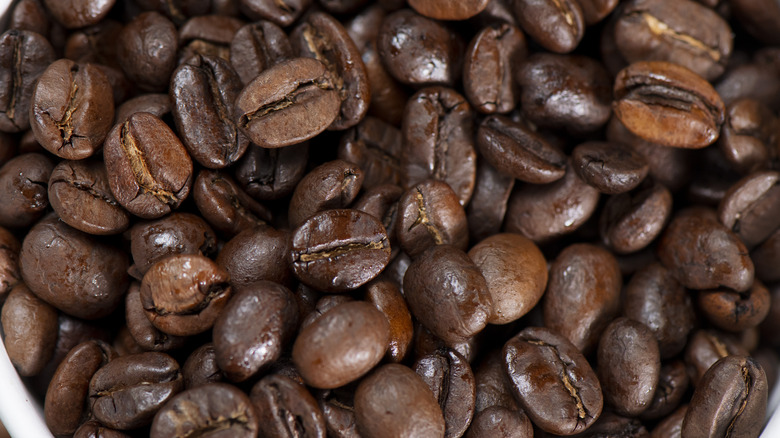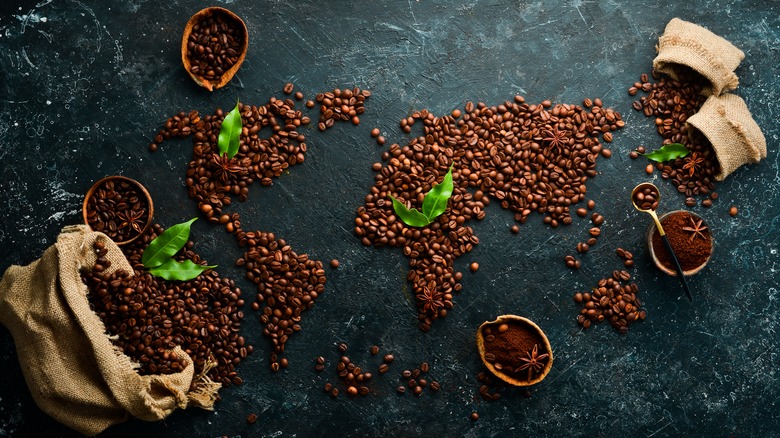What 'Cupping' Means In The Coffee Industry
For caffeine lovers, enjoying a beloved cup of joe is an act of the heart as much as it is an act of taste. Starting the morning off right, or making it through the work day, is a job uniquely suited for coffee. Making sure that coffee tastes and smells the way it does, however, is a job made for coffee cuppers.
Coffee cupping, also known as coffee tasting, is both a delicious and vital tasting method used to assess the texture, aroma, and flavor of coffee. The standardized process, often performed by coffee professionals known as "Q Graders," is favored by roasters, baristas, and coffee shops looking to educate staff members, ensure product consistency, and create exclusive java flavors. "Cupping is just one of many ways to taste coffee, but it's a very efficient way to taste many different coffees side-by-side," Chris Kornman of The Crown: Royal Coffee Lab & Tasting Room explains in an interview with Perfect Daily Grind.
Beans that look good as well as taste good
In order to find the perfect set of beans, a lengthy process of hulling, milling, polishing, and roasting is undertaken before we finally arrive at brewing. That's a lot of -ing words to take in, but what it means is that the beans are professionally processed before heading off to be sold or used. The journey from plant to cup is a long one, and necessary procedures must be followed.
During the process of cupping, as the National Coffee Association describes, a taster measures the acidity and body of a brew by deeply inhaling its scent and tasting small quantities, usually by quickly sipping a spoonful. Doing this ensures the coffee is aerated and properly spread across the taster's tongue. Taste is not the only factor taken into consideration when cupping, however: To confirm consistent quality and the successful completion of the beans' journey, the cupper assesses their texture and appearance even before they are boiled in temperature-controlled water, or at the very least analyzes the grounds before they are brewed (per Difford's Guide).
From there, every aspect of the beverage, from the way its beans are ground to the temperature at which it's served, is measured for perfection; the Specialty Coffee Association even recommends that devoting a specific space to the purpose of tasting (via Perfect Daily Grind). Cuppers can then properly assess specific hints of flavor and aroma before them.
Geography's impact on coffee cupping
As they assess the beans and brews, Torke Family Coffee Roasters notes that some experienced coffee cuppers are able to identify the region where the beans were grown, as well as the notes behind the coffee's original aroma. This is because, as Amora Coffee reveals, coffee beans retain the flavor of the area and soil conditions they come from. The climate, altitude, and location of the plant can alter the palatability of its coffee. With all these factors to consider, is it any wonder that the cupping process is often compared to wine tasting?
"Not surprisingly, growing coffee is similar to growing grapes: different areas produce different tastes," Karen Attman of Flavors of Bogota explains. These cupping notes, used to describe and place a coffee's taste, are often listed on a wheel of flavors. The wheel ranks the flavors from nutty to sour, burnt to floral, chocolate to tobacco. It gives cuppers a way to explain the notes in their cups, making it easier for coffee brands to choose distinct tones for the enjoyment of their customers.


